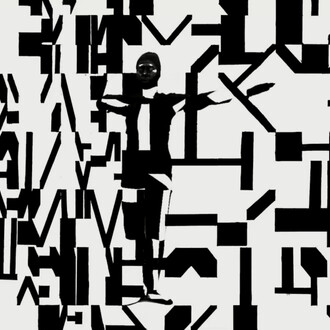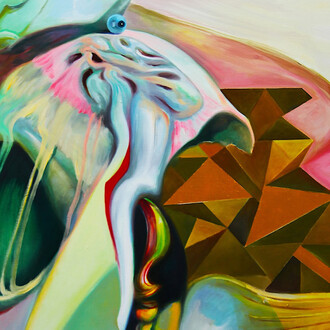Bitforms gallery is pleased to announce "Alone Together," Addie Wagenknecht’s second solo exhibition with the gallery, which features a new series of paintings rendered in International Klein Blue pigment. The works speak to the artist’s longtime preoccupation with gendered labor, power structures, and technology. The title of the exhibition, "Alone Together," refers to the book by technology and society specialist, Sherry Turkle.
Wagenknecht’s latest paintings expand upon themes in the artist’s prior series "Black Hawk Paint" (2008- current) and "Internet of Things" (2015), exploring dynamic action painting with small-scale drone aircraft and networked functionality using Roomba-based sculptures and wifi hardware that respond or jam networks within the space.
The Roomba is a product line of autonomous robotic vacuum cleaners sold as household consumer devices by a corporation focused on military defense technology called iRobot. Roombas have become cultural emblems of the Internet of Things, a network of physical devices embedded with electronics, software, and sensors which enable these objects to connect and exchange data. They are marketed and anthropomorphized as friendly domestic assistants, masking their nefarious associations with big data and surveillance. Though intended to alleviate the burden of domestic labor, the robots often have an adverse impact by requiring constant cleaning, assistance and maintenance.
To create the works in this exhibition, Wagenknecht modified a Roomba to paint on canvas as it enacts its preprogrammed algorithm intended to clean. As the Roomba maneuvers around the canvas, Wagenknecht reclines nude. The Roomba relentlessly attempts to navigate around her body because it is designed to continue on a trajectory until the entire area has been mapped by its algorithm. The result is a void in the shape of a female form surrounded by the blue strokes of the robot.
The paintings reference Yves Klein’s "Anthropométries" in which he directs nude female models, who he referred to as “living paintbrushes,” to press their pigment-covered bodies against canvases in front of an audience. In contrast, Wagenknecht abandons the spectacle of the objectified female nude in favor of drawing attention to what is absent. There is no performance or process documentation on display and the female form is only acknowledged in the negative space of the paintings.
















